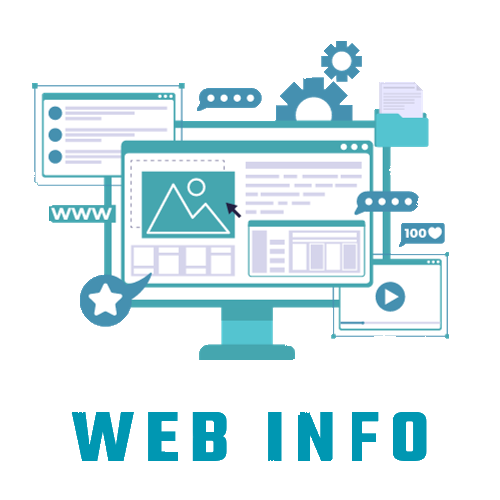In the ever-evolving realm of e-commerce, Shopify stands out as a powerhouse platform that empowers businesses to establish their online presence swiftly and efficiently. At the heart of every successful Shopify store lies a skilled Shopify front-end developer who crafts captivating user interfaces and ensures seamless user experiences.
In this article, we'll delve into the realm of Shopify front-end development, exploring job opportunities, essential skills, and career advancement paths.
Exploring Shopify Front-End Development Careers
Exploring Shopify Front-End Development Careers open doors to dynamic opportunities in the ever-expanding realm of e-commerce. As businesses increasingly shift their operations online, the demand for skilled Shopify front-end developers continues to soar. These professionals play a vital role in shaping the digital storefronts that captivate and engage customers, translating design concepts into interactive and seamless user experiences.
With a strong foundation in front-end technologies such as HTML, CSS, and JavaScript, aspiring Shopify developers can embark on a journey filled with growth and innovation. Whether you're a seasoned developer seeking new challenges or a fresh graduate eager to make your mark, Shopify offers a plethora of career paths to explore. From customizing Shopify themes to optimizing website performance and implementing cutting-edge features, front-end developers have the opportunity to showcase their creativity and technical prowess in an ever-evolving landscape.
As you delve deeper into the world of Shopify front-end development, you'll discover a vibrant community of professionals eager to share knowledge, collaborate on projects, and push the boundaries of what's possible in e-commerce. Whether you choose to work at a Shopify agency, join an in-house development team, or embark on a freelance career, the possibilities for growth and advancement are limitless. By honing your skills, staying abreast of industry trends, and embracing new challenges, you can carve out a fulfilling and rewarding career in Shopify front-end development.
Job Opportunities and Job Descriptions
Job opportunities in Shopify front-end development are abundant and diverse, catering to individuals with varying skill levels and career aspirations. From entry-level positions to senior roles, there are opportunities to suit professionals at every stage of their career journey. As businesses increasingly recognize the importance of delivering exceptional online experiences, the demand for skilled Shopify front-end developers continues to rise. Whether you're passionate about crafting visually stunning user interfaces, optimizing website performance, or implementing innovative features, there's a role waiting for you in the thriving Shopify ecosystem.
When it comes to job descriptions for Shopify front-end developers, employers typically seek candidates with a strong foundation in front-end technologies such as HTML, CSS, and JavaScript. Proficiency in Shopify's liquid templating language and experience with Shopify theme development are often listed as preferred qualifications. Additionally, employers may look for candidates with a keen eye for design, a knack for problem-solving, and effective communication skills. Responsibilities may include collaborating with designers and backend developers to translate design concepts into functional web pages, customizing Shopify themes to meet client requirements, and ensuring seamless user experiences across different devices and browsers. With a diverse range of job opportunities and exciting challenges awaiting, pursuing a career in Shopify front-end development offers endless possibilities for growth and advancement.
Essential skills for success
Here's an explanation of the Essential Skills for Success in Shopify Front-End Development.
- Proficiency in Front End Technologies: Success in Shopify front end development begins with a solid foundation in essential front end technologies. Mastery of HTML, CSS, and JavaScript is fundamental for crafting responsive, visually appealing user interfaces that engage and delight customers.
- Familiarity with Shopify's Liquid Templating Language: Shopify's Liquid Templating Language is the backbone of theme customization and dynamic content rendering. A thorough understanding of liquid syntax and functionality is essential for tailoring Shopify themes to meet client specifications and create unique, branded storefronts.
- Problem-Solving Abilities: Front-end developers encounter a variety of technical challenges during the development process. From debugging code errors to optimizing website performance, effective problem-solving skills are critical for identifying issues and implementing solutions efficiently.
- Effective Communication and Collaboration: Success in Shopify front-end development relies on effective communication and collaboration within multidisciplinary teams. Clear and concise communication ensures that project requirements are understood and implemented accurately, while collaboration fosters creativity, innovation, and shared understanding among team members.
- Continuous Learning Mindset: The field of front-end development is dynamic and ever-evolving, with new technologies and best practices emerging regularly. Successful Shopify front-end developers embrace a continuous learning mindset, staying curious, adaptable, and committed to ongoing professional development to stay ahead of industry trends and advancements.
Mastering the essential skills outlined above is crucial for success in Shopify front-end development. By honing their technical abilities, fostering effective communication and collaboration, and maintaining a commitment to lifelong learning, developers can navigate the complexities of e-commerce and thrive in the competitive landscape of Shopify development.
Career Paths and Growth Opportunities
Career paths and growth opportunities in Shopify front-end development offer a diverse range of possibilities for professionals looking to advance in their careers. Here's a breakdown of potential paths and opportunities:
- Front-end Developer: As a front-end developer specializing in Shopify, individuals focus on creating visually appealing and user-friendly interfaces for Shopify stores. They work closely with designers and back-end developers to implement design concepts and ensure seamless functionality. Career growth in this role may involve taking on more complex projects, expanding technical skills, and becoming a subject matter expert in Shopify development.
- Shopify Theme Developer: Theme developers specialize in creating custom Shopify themes tailored to meet the unique needs of clients. They have a deep understanding of Shopify's liquid templating language and are skilled at translating design concepts into fully functional themes. Career growth opportunities may include becoming a lead theme developer, mentoring junior developers, and contributing to the Shopify theme marketplace.
- E-commerce Consultant: E-commerce consultants provide strategic guidance and technical expertise to businesses looking to optimize their Shopify stores for success. They offer recommendations on website design, user experience, performance optimization, and marketing strategies to help clients achieve their business goals. Career advancement in this field may involve specializing in specific industry verticals, pursuing certifications, and establishing a consulting firm.
- Shopify App Developer: App developers focus on creating custom apps and integrations for Shopify stores to enhance functionality and streamline business processes. They have a deep understanding of Shopify's API and development tools, as well as experience with popular programming languages and frameworks. Career growth opportunities may involve developing high-demand apps, partnering with Shopify Plus merchants, and expanding into related areas such as app marketing and monetization.
- Shopify Partner or Agency Owner: Individuals may choose to establish their own Shopify development agency or become an official Shopify partner, offering a range of services including design, development, marketing, and support. As an agency owner or partner, professionals have the opportunity to build a team, collaborate with other experts, and work with clients from diverse industries. Career growth may involve scaling the agency, expanding service offerings, and achieving recognition as a top Shopify partner.
Overall, career paths and growth opportunities in Shopify front-end development are abundant and diverse, offering professionals the chance to advance their skills, take on new challenges, and make a significant impact in the thriving e-commerce industry. By staying informed about industry trends, networking with other professionals, and continually investing in their development, individuals can chart a successful and fulfilling career path in Shopify front-end development.
Conclusion: How to Become a Shopify Developer
Becoming a successful Shopify front end developer requires dedication, continuous learning, and a passion for creating exceptional user experiences. Whether you're just starting your career or looking to level up your skills, there are plenty of resources available to help you succeed. From online courses and tutorials to community forums and developer documentation, take advantage of these resources to hone your skills and build a rewarding career in Shopify front end development.
FAQS
1. What programming languages are commonly used in Shopify front end development?
Commonly used programming languages include HTML, CSS, JavaScript, and Shopify's Liquid templating language.2. What is Liquid, and how is it used in Shopify front end development?
Liquid is Shopify's templating language used to build dynamic content and customize storefronts. It allows developers to insert logic, variables, and loops into templates to create dynamic pages.3. What tools and frameworks are commonly used by Shopify front-end developers?
Popular tools and frameworks include Shopify CLI, Shopify Theme Kit, Sass for CSS preprocessing, and JavaScript libraries such as React or Vue.js for building interactive components.4. How do Shopify front-end developers ensure their themes are responsive and mobile-friendly?
Shopify front-end developers use responsive design techniques such as media queries, flexible layouts, and fluid grids to ensure their themes adapt seamlessly to different screen sizes and devices.5. What are some best practices for optimizing the performance of Shopify front end themes?
Best practices include minimizing asset sizes, optimizing images, reducing HTTP requests, leveraging browser caching, and using lazy loading techniques to improve page load times.6. How do Shopify front end developers customize the appearance of Shopify themes?
Developers customize Shopify themes by modifying HTML templates, styling with CSS, and adding custom JavaScript functionality. They can also create custom sections, blocks, and snippets to enhance theme flexibility.7. What are Shopify sections, and how are they used in theme development?
Shopify sections are customizable blocks of content that allow merchants to easily add and arrange content on their storefronts. Developers use sections to create modular, reusable components within Shopify themes.8. What role does accessibility play in Shopify front end development?
Accessibility is crucial for ensuring that all users, including those with disabilities, can access and interact with Shopify stores. Front end developers adhere to accessibility standards such as WCAG guidelines and implement features like keyboard navigation and screen reader compatibility.9. How do Shopify front end developers handle theme updates and version control?
Developers use version control systems like Git to manage changes to theme files and track revisions. They may also utilize Shopify's versioning feature to roll back changes and test updates in a staging environment before deploying to production.

